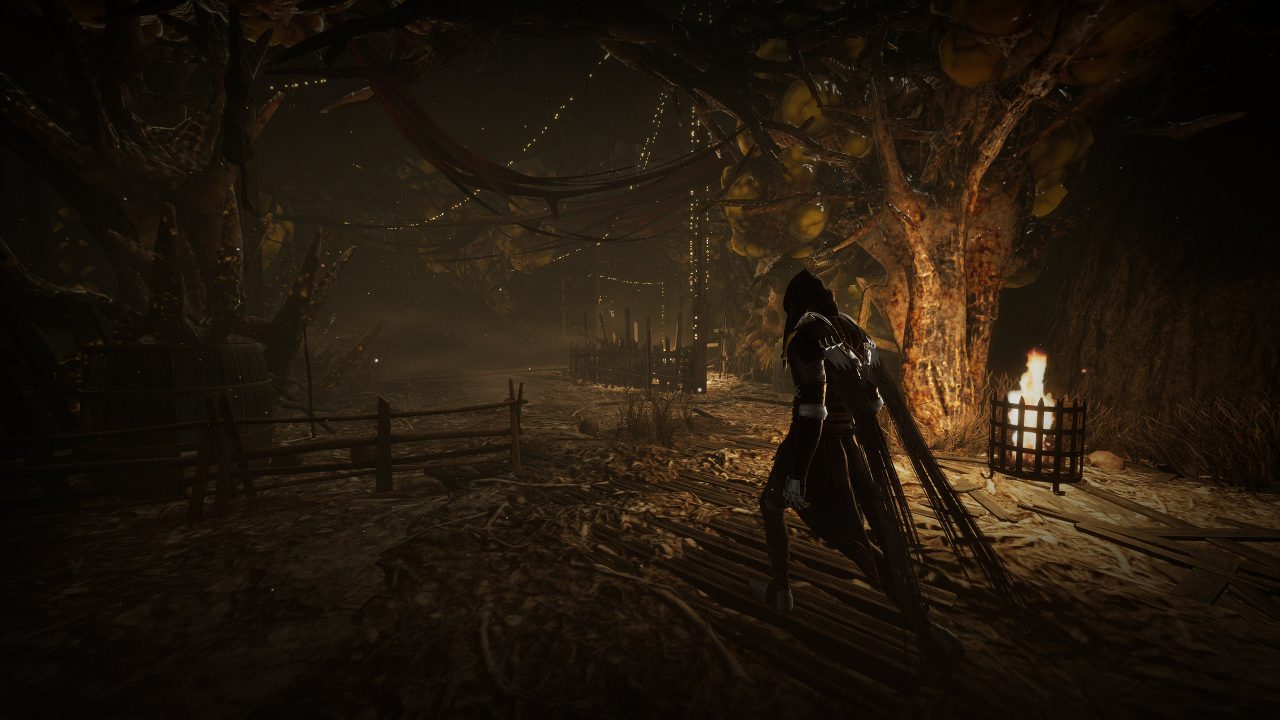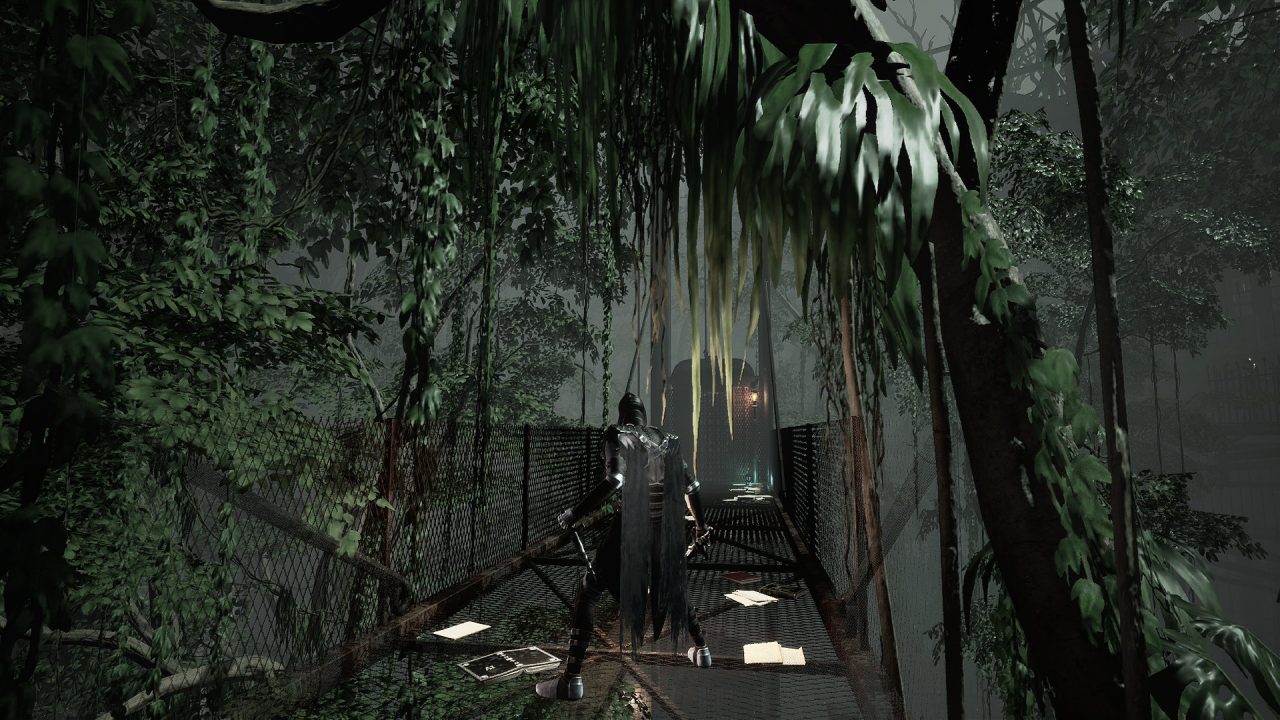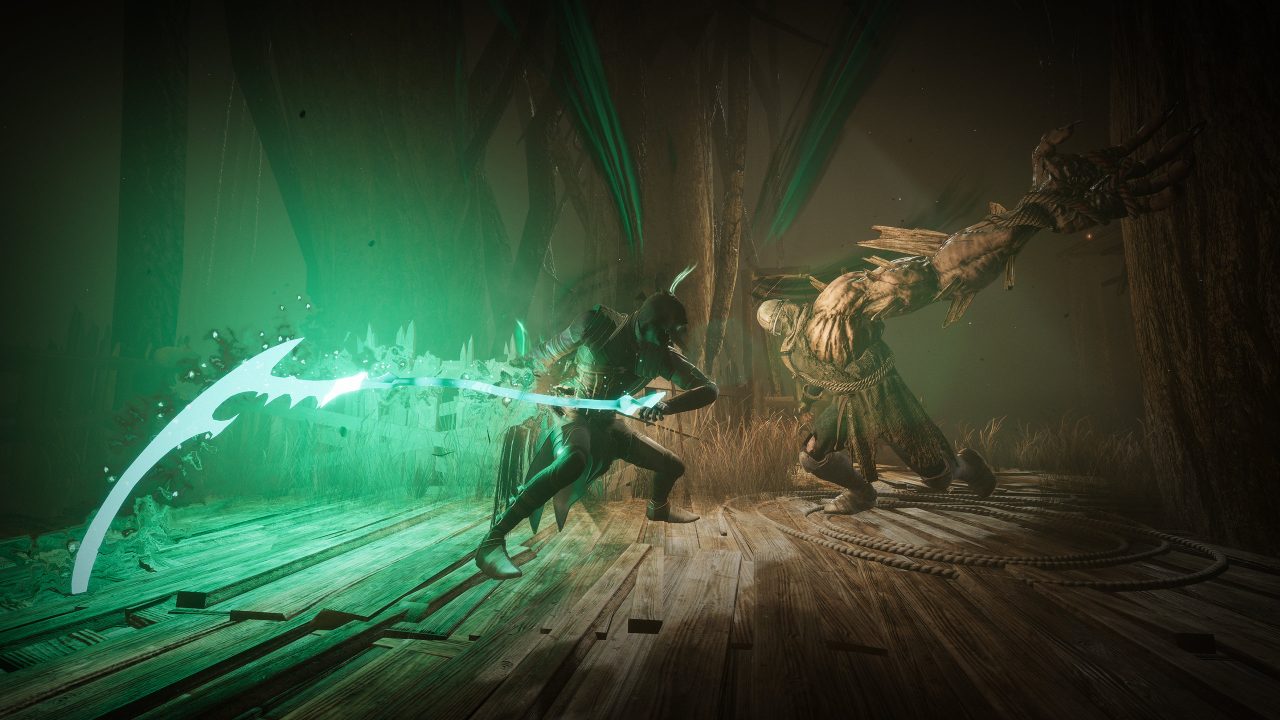Ever since the release of Demon’s Souls, thousands of games have attempted to imitate the magic of Hidetaka Miyazaki’s directorial touch. So much so that it birthed an entirely new subgenre of games known as Soulslikes, which often copy the brooding atmosphere and tougher-than-nails gameplay with varying degrees of success. Some games, like Hollow Knight, rise to the occasion, offering fantastic experiences to rival even the best of Miyazaki’s works. Thymesia, sadly, is not one of them.
The basic building blocks of Thymesia’s premise are an amnesiac protagonist, blood that turns people insane and underlying themes of science gone too far. If any of this sounds familiar to you, that’s because the Kingdom of Hermes is basically a rehash of Bloodborne’s Yharnam.
Unfortunately, Hermes inherits little to none of the charm that made Yharnam such a memorable locale. Levels are exceedingly small and take little more than an hour to explore almost fully. Shortcuts are few and far between, and the game is all too fond of reminding players they can’t jump by placing a frustrating amount of shin-high ‘obstacles.’ Entire sections of levels are also gated behind sub-quests that players must first select from a central hub. Not only does this ruin any semblance of flowing level design, but it also makes exploration quite confusing when normally interactable doors and gates are grayed out because you didn’t load in the correct quest instance. Considering there are only three real levels with a final ‘boss’ arena, Hermes fails to impress in the quantity or quality of its levels.

The story itself does little to immerse players into the setting. Primarily told through scattered notes across the world, these serve as little more than soulless exposition dumps of what has been happening. Worse, picking up these notes wrests control from your character as you’re forced to read the pop-up, often leading to your death. These notes do little but interrupt the fast pace of the gameplay. Even reading through the notes back at the hub felt like I was reading through speed spoiler summaries of events rather than piecing together a mostly whole but still fragmented jigsaw puzzle. In this sense, Thymesia utterly misses the point of why people find the obtuseness of the Soulslike genre so appealing. It’s not so much the darkness and brooding atmosphere but more so in letting environments and things like item descriptions speak for themselves, allowing players to interpret them how they see fit.
Level design is hugely frustrating with how Thymesia equates cheap “gotcha!” moments with genuine challenges. Almost every corner you peek around feels like it has a 50% chance of an enemy waiting to ambush you with an unblockable attack. The enormous leash range for enemy aggro clashes heavily with the uninspired, linear map layouts. The number of mid-level enemy gank squads is also unacceptable. The game occasionally mixing in more challenging mini-boss fights in these situations does little to improve the already poor world traversal experience.

Thymesia fares marginally better on the gameplay front. Anyone familiar with Souls games, especially Sekiro, will find themselves right at home. Every enemy presents two health bars to chew through. One regenerates while the other doesn’t, and each bar is weak to either saber or claw attacks. Attacking enemies head-on with a flurry of attacks will only get you so far before they hit back with counters of their own. As such, you naturally begin to engage in a dance rather than a one-sided beatdown, slashing and parrying back and forth until only one of you remains. This direction, however, is overly pushed as many enemies gain full super armor once they begin their attack animations, meaning you can’t stagger them out of their attacks. While not a big deal for knights clad in steel armor, when even measly dagger-wielding peasants ignore your staggers entirely, I couldn’t help but raise my eyebrows at this design choice.
A rudimentary stat system using skill points helps enhance your combat encounters, utilizing much the same upgrade system as the Souls series. In addition, you can use memory shards collected from fallen enemies to upgrade your health, saber attacks (effective against the regenerating health bar) or claw attacks (effective against the non-regenerating health bar). More interestingly, every level up earns you a skill point to spend on various upgrades ranging from damage enhancement to enemy drop rate buffs. The number of options is nothing to scoff at.
Thymesia’s standout gameplay feature would undoubtedly be its plague weapon system. Landing a special charged-up attack on an enemy gives you a spectral copy of their weapon you can use for one attack. Enemies also occasionally drop weapon shards that you can use to upgrade a separate arsenal of plague weapons that you can use at the cost of some energy. Plague weapons add a nice touch of depth to what can become a somewhat monotonous parry-and-counter gameplay loop, and some of the later ones open up entirely new strategies. Farming for upgrades, however, is a pain, to say the least, especially for plague weapons that require you to fight the same boss repeatedly. I tried grinding for all the unlocks for an hour or so but found the levels too boring to traverse more than a handful of times.

When Thymesia’s gameplay is at its most enjoyable, I still couldn’t help but wonder how much I was genuinely enjoying the work of the folks over at OverBorder Studio versus merely enjoying a slight reskin of Sekiro’s gameplay. The fact that Sekiro’s iconic mikiri counter has essentially been lifted wholesale should tell you as much because Thymesia refuses to budge even an inch from its influences and ends up being a much worse experience for it. Throughout my entire eight-or-so-hour playthrough, I couldn’t help but feel my time would be much better spent replaying any of the other Souls games in my library.
Even in areas where the game should be able to properly flex its creative muscles, such as its audiovisual design, it simply falls flat. For example, basic axe-wielding enemies in the first level are brought over almost one-to-one from The Forest of the Fallen Giants in Dark Souls II. This kind of lazy design bleeds into even the game’s audio.
Imitation is the sincerest form of flattery, but when the imitation does little to add its own twists and ideas to an already established formula, it ends up as little more than a cheap copy of the original. For those desperate for Sony to finally port Bloodborne over to the PC, Thymesia might be a good stopover. Still, for anyone looking for a genuinely good Soulslike experience, your time is better spent elsewhere.


